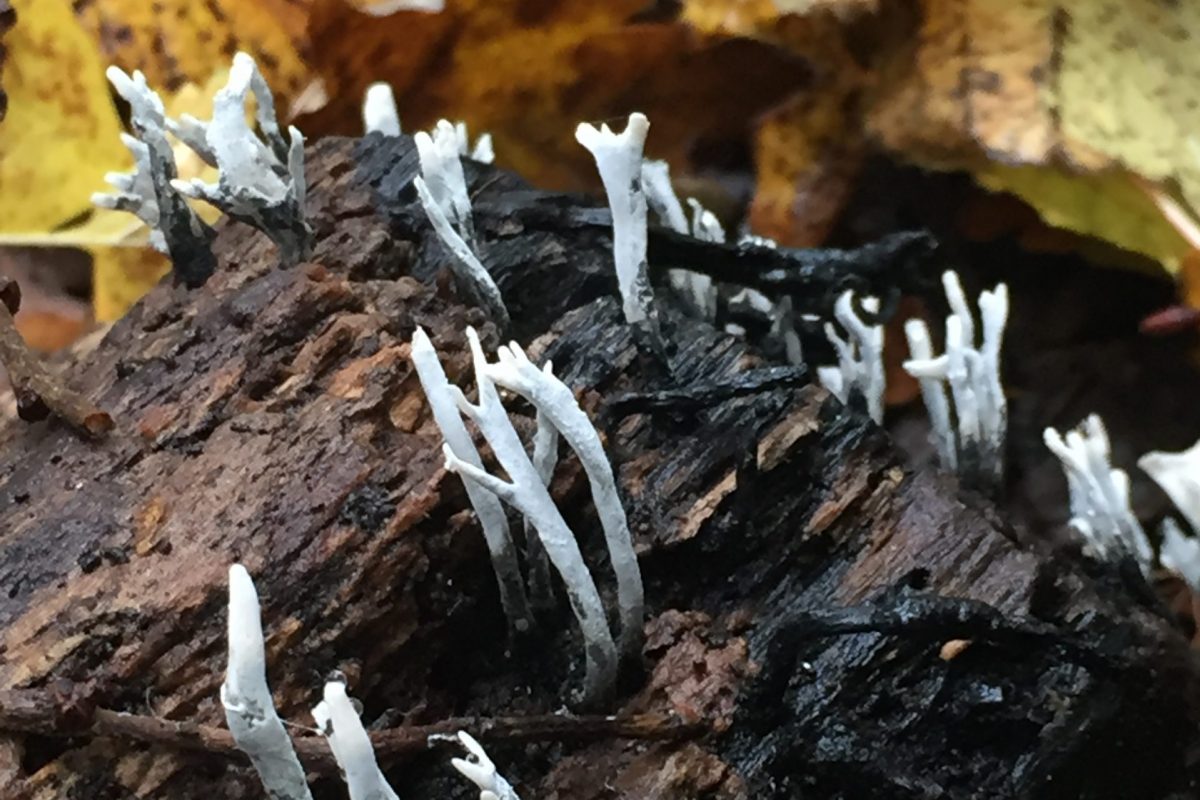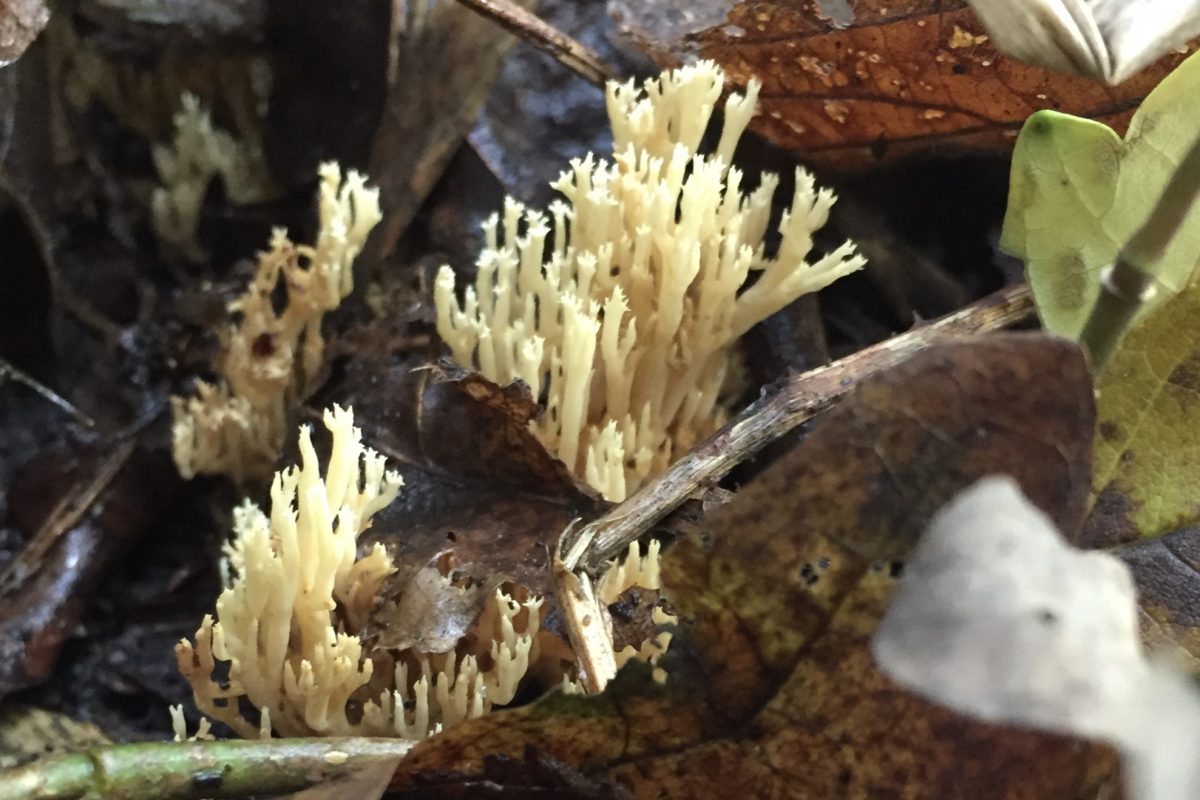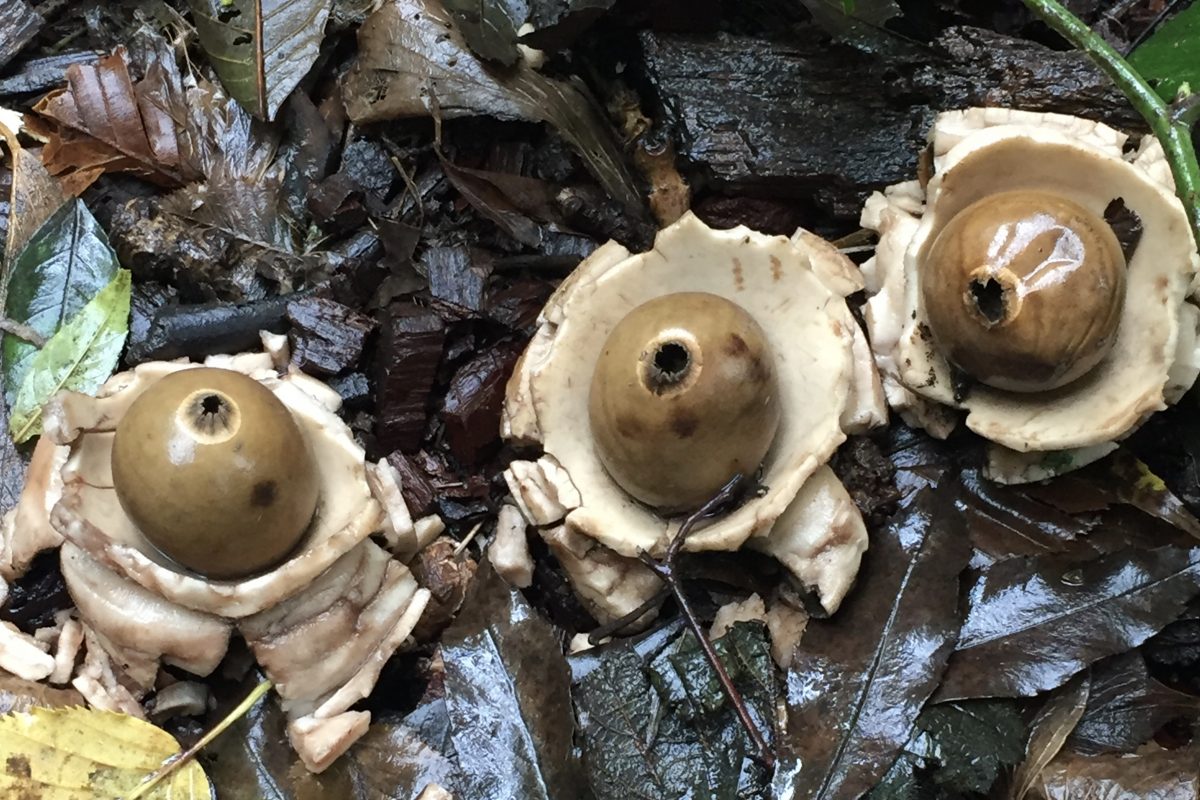I don’t like autumn much; work is busy, it rains a lot and I hate fireworks. But in the last couple of years that has changed, as I have discovered fungi.
As the land dampens wonderful shapes emerge from the ground; the reproductive parts, or “fruiting bodies” of fungi. Most of each fungal organism lives under the surface, but at this time of year a variety of structures poke up through the ground (or wood) to release their spores, the equivalent of the seeds of flowering plants.
They are not nearly as easy to find as you might think. They are often small, and their colours are usually subtle, blending with the trees and leaf litter. But they can make an autumn stroll in the woods a treasure hunt. As you walk along the trail keep your eyes tightly focused on the path edge for any unusual shapes. They will be there.
As you pass any old logs or stumps, look for tiny black and white fingers poking out of the wood. Flick them gently and watch the spores float away. These are the fruiting bodies of Candlesnuff fungus (Xylaria hypoxylon).

This is a saprophytic fungus, one that feeds off another organism, as opposed to the mycorrhizal fungi which form a relationship with tree roots to share nutrients. The saprophytes are the rotters. Some, like the gardener’s enemy the honey fungus (Armillaria mellea), feed off and kill living trees. The honey fungus, and the sulphur tuft (Hypholoma fasciculare) attack fresh logs.
Once these fellows have had their fill the wood is soft enough for the little candlesnuff to feed on polysaccharides – chemicals which help bind wood together. So when the candlesnuff has done its job there’s a nice soft mushy meal left for insects and other small animals.
The candlesnuff, according to some accounts, contains anti-viral chemicals – maybe the cure for COVID is sitting underneath our noses! I’m sure the lack of evidence for that statement is not deterring Donald Trump from sprinkling them on his cornflakes as I write this.
They are not poisonous, but even the most avid foragers deem them “too small and tough to eat”. Why don’t you try some and let me know? No, don’t, please. I don’t want anyone suing me when they have an upset tummy after eating candlesnuff quinoa! More importantly, the trail is precious and small and we should leave the mushrooms alone for others to enjoy. Photograph and share them online instead.

Trickier to find, as they are often on half buried dead twigs and logs, are the wonderful Coral Fungi. Only a few centimetres tall, their fruiting bodies come in contorted shapes and are definitely coral-like. Some are even coral-coloured. This one was one of a line of corals growing from an old twig in the leaf litter.
It is, I think, a Crested Coral (Clavulina coralloides), but if someone wants to correct me, please be my guest.

Lastly I was delighted to find a whole group of Collared Earthstars (Geastrum triplex). They look completely alien, their protective cover unfolding in a star to reveal the central rounded receptacle with its little hole. If, very gently, you touch the receptacle, you should be rewarded with a puff of spores. They have evolved so drops of rain or small animals brushing past will touch them and trigger the clouds of spores, which, hopefully, will form little groups along the path for us to admire next autumn.
When you’re looking for fungi, do just that, look. Walk slowly and sometimes stop and get down to have a close peer. Rummaging and kicking leaves about will destroy what you’re looking for.
There are about 4,000 species of large fungi in the UK, and thousands more tiny ones. Many are difficult to identify, and you are doing pretty well if you identify the family or genus they come from. To get to species level, you sometimes need a microscope and chemical tests. But thankfully there are dozens of common fungi which are not too difficult to identify, like the three I’ve mentioned.
If you want to know more there are some superb websites and an increasing array of field guides. Particularly recommended is first-nature.com, curated by fungal fanatic Pat O’Reilly who has collected thousands of photos of UK fungi (both common and rare) and who has also authored a beginners guide Fascinated by Fungi. The British Mycological Society website is excellent too.
So, get out on the trail, make sure you’ve got the right glasses on, walk slowly, and see what you can find. Happy hunting!


